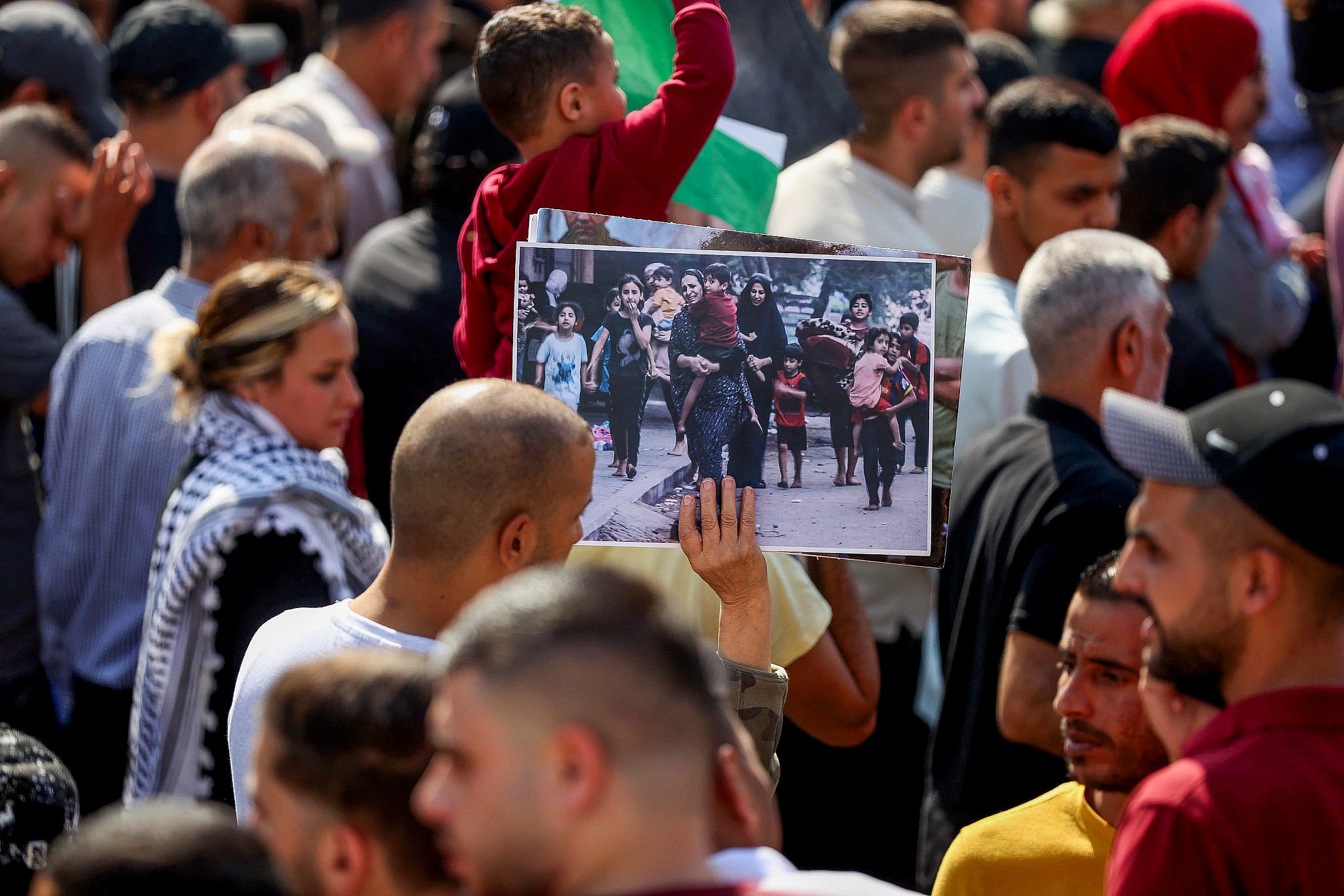On Tuesday night, the initial shock, mourning, and sorrow that has overshadowed the occupied West Bank since Oct. 7 evolved into anger and outrage, predominantly directed at the Palestinian Authority (PA), following the explosion at the Al-Ahli Arab Hospital in Gaza. Tensions flared as protests against the PA’s stance on Gaza turned violent; PA security forces responded with gunfire and tear gas, prompting militants in Jenin to open fire in turn. A 12-year-old, Razan Nasrallah, was killed in the city in the resulting clashes, and several others were injured.
Although the Al-Ahli Hospital bombing was the immediate catalyst for the protests, it awoke long-running popular discontent and dissatisfaction with the PA’s silence on the ongoing war in Gaza. Protesters shouted slogans calling for the Palestinian regime to be toppled, and for Palestinian President Mahmoud Abbas to step down.
That Abbas walked away from his planned meeting in Jordan with U.S. President Joe Biden, and instead returned immediately from Amman to Ramallah after the hospital explosion, was not enough to placate the popular uproar. Several dozen Palestinians in Nablus continued the protests on Wednesday, and were met by tear gas and gunfire from PA officers, bringing the number of injuries, according to medical sources, to around 40. The PA’s health ministry has not reported the injuries resulting from the protests.
Prior to the hospital bombing, there had been an almost tangible stillness in Palestinian cities in the West Bank. On the heels of the Hamas-led attack against Israel on Oct. 7, and Israel’s devastating response in the Gaza Strip, the Israeli army has imposed a stringent lockdown and movement restrictions on Palestinians in the occupied territory.
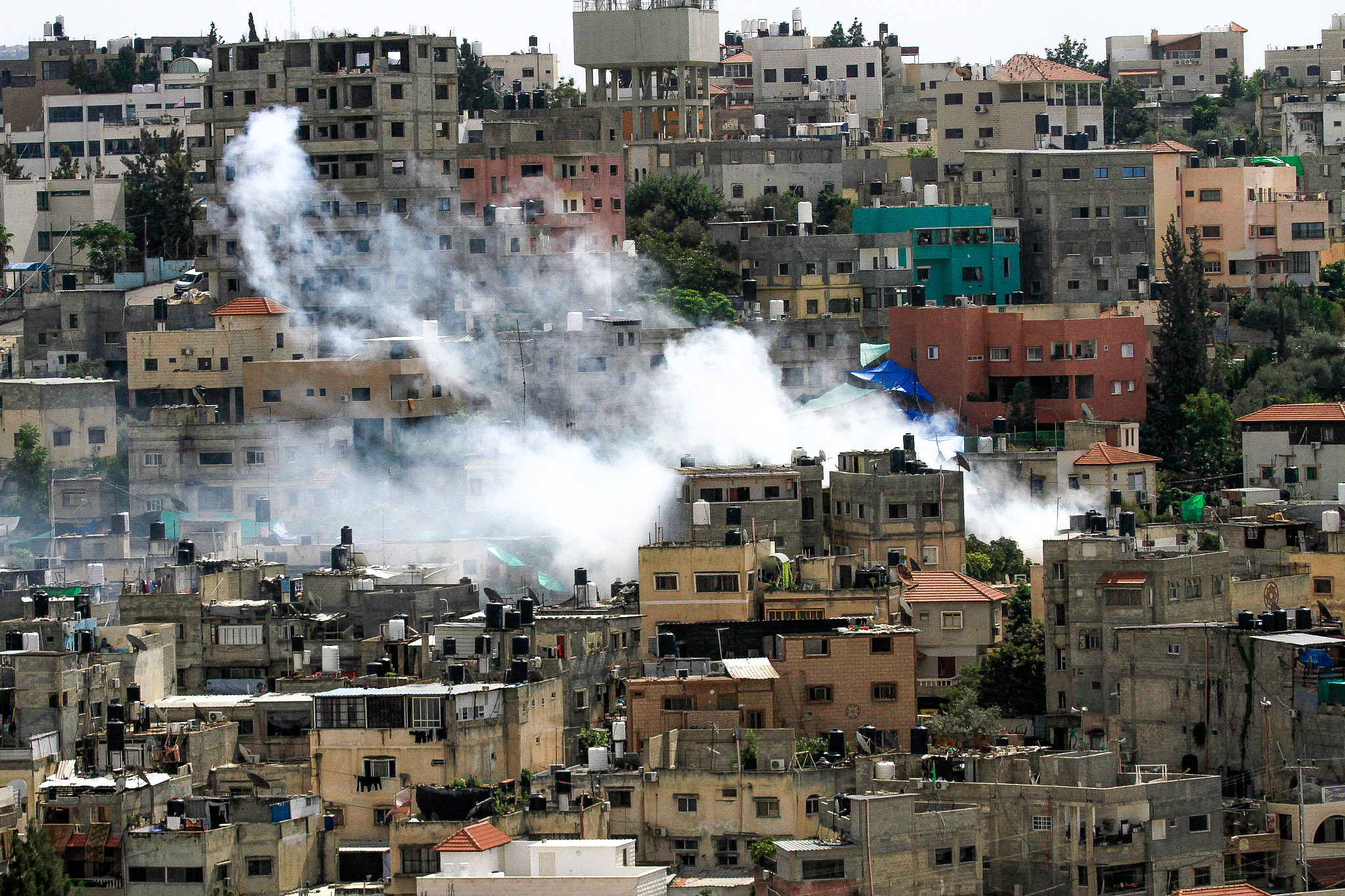
The lockdown, which is intended to keep the West Bank firmly segregated as Israel carries out its war, has made Palestinians here feel as if they are reliving the days of the Second Intifada in the early 2000s — a glimpse of which was also seen Tuesday night. Back then, as today, the Israeli military imposed a cantonized strategy across the West Bank, closing off roads with makeshift gates and checkpoints to separate rural villages from larger towns and cities, and those cities from one another. The Israeli authorities also banned Palestinians from driving on many roads connecting the northern and southern West Bank, most infamously through what is known locally as the “Container Checkpoint” near Bethlehem, which is still in operation to this day.
As a result, a sense of terror and exhaustion has taken root among many Palestinians in the West Bank these past two weeks, a consequence not only of the lockdown but also of the profound changes that have occurred this month, which seem to have fundamentally altered the political landscape.
Since Hamas’ attack, the number of extrajudicial killings, displacements of local communities, and settler attacks in the West Bank have skyrocketed, and are almost certain to go unpunished. As of Thursday, at least 75 Palestinians have been killed and over 1,300 injured in the West Bank since Oct. 7, according to the PA’s health ministry. Six of the victims were killed by armed settlers in Qusra and At-Tuwani.
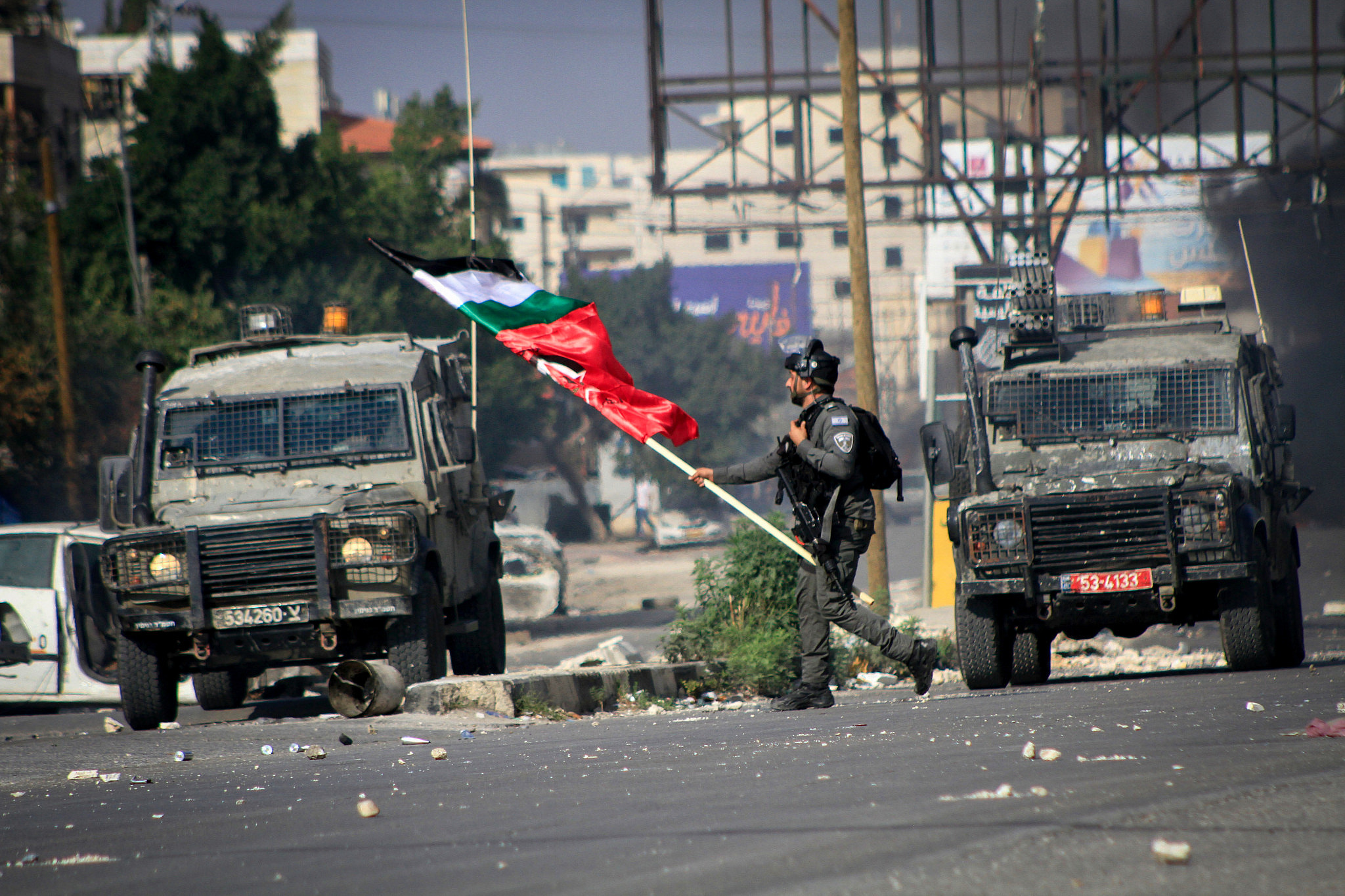
The images of victims and mass destruction have left indelible scars on Palestinians’ collective memory. With over 3,500 killed in Gaza and an entire population on the brink of what many fear could become a forced exodus, Palestinians across the region are living in perpetual fear. And the PA’s absence in this crisis raises significant questions about its people’s future.
An even deadlier year
Before Oct. 7, Palestinians in the West Bank were already facing repeated Israeli military raids and punitive measures in the wake of renewed Palestinian resistance from cities like Jenin and Nablus. A proliferation of arms in Palestinian society amid the PA’s weakening control has further fed the collective anxiety.
In addition, Palestinian communities and bypass roads, particularly in Areas C and B, have become increasingly vulnerable to escalating settler violence, often conducted in the presence of soldiers who either fail to intervene or, occasionally, join in. The resulting atmosphere of persistent apprehension is especially palpable under the Israeli army’s current lockdown — a closure which does not apply to Israeli settlers.
“This will lead to isolation of the [Palestinian] villages and towns, and thus free rein for settlers in the area,” said Hani Odeh, the mayor of Qusra, a village outside Nablus. Last week saw the killings of four residents of Qusra, including a child, by armed settlers and soldiers. The next day, at the funeral, settlers killed a father and son.
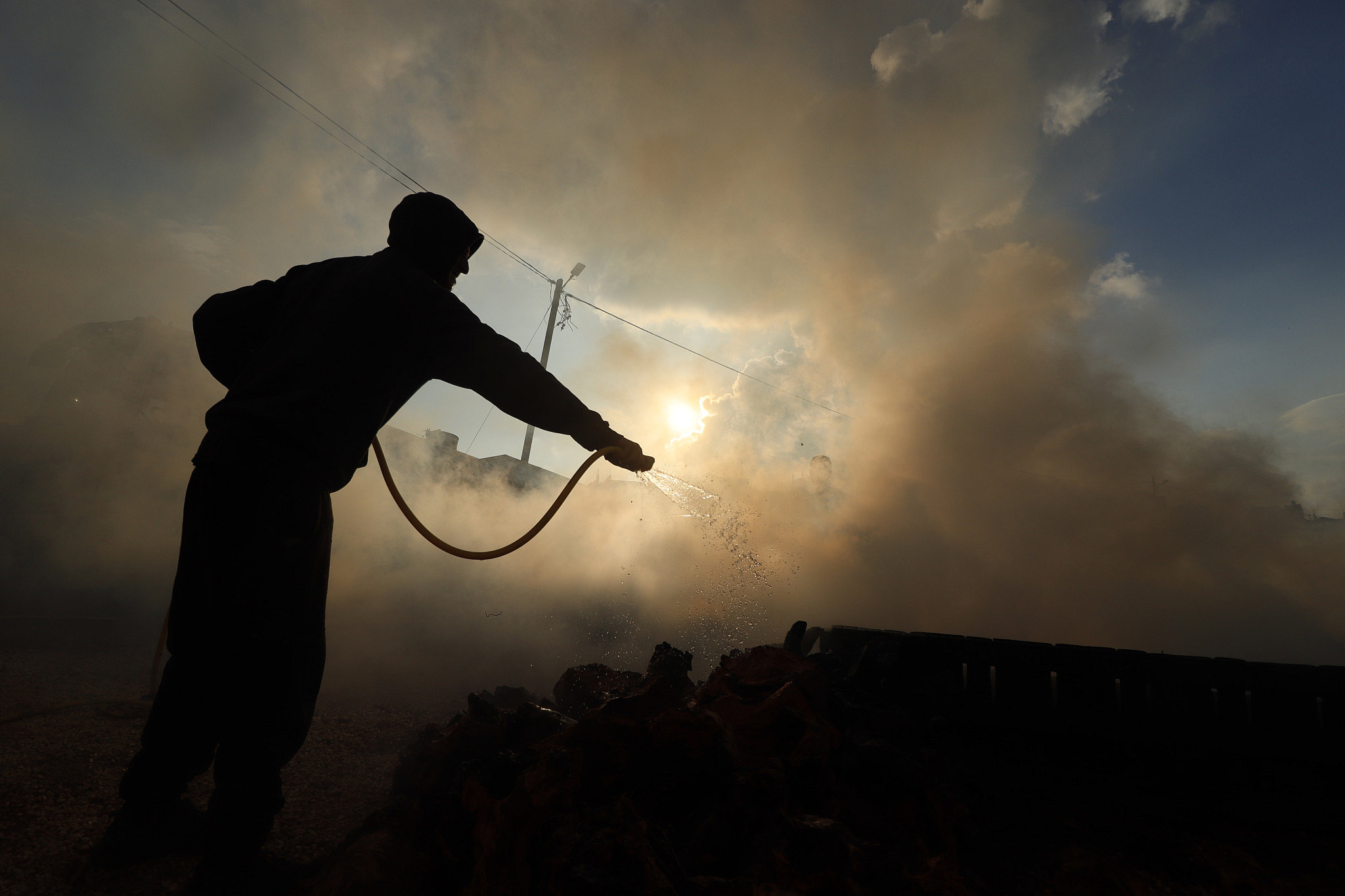
At the same time, the Israeli military’s long-term open-fire and shoot-to-kill policies in the West Bank have exacerbated what has already been the deadliest year for Palestinians in the West Bank since 2006, with at least 255 killed since January. For example, on Oct. 12, just outside the village of Silwad, east of Ramallah, Israeli soldiers at a flying checkpoint opened fire and killed 37-year-old Randa Ajaj and injured her son, Ismail.
The threat of lethal force looms large, turning routine activities into potentially life-threatening encounters. Salam Saadeh, 33, a resident of Ramallah, says she is “afraid to sneeze” near the military checkpoints that she must pass through on her weekly commute to Nablus to visit her elderly parents. “I’m avoiding trips to Nablus now, because I’m afraid it’s becoming more risky,” she said.
Meanwhile, the town of Huwara — which was targeted by a mass settler pogrom in February, and by regular attacks since — has been facing a week-long military closure of its vital commercial and residential street, forcing residents to request permission from the army even for basic tasks. Huwara’s local municipality, including its mayor Mo’een Dmeidi, has had to coordinate with the army to provide for its community.
“After lengthy efforts, we managed to get permission for the families living on the main road to cross the street on foot to throw out their garbage,” Dmeidi said, illustrating how even the simplest things could not be done without the army’s consent. The threat of settlers in the area also still looms, despite the heavy military presence. “It’s an unbelievable situation of collective punishment,” he added.
Most read on +972
To the east of Ramallah, the Bedouin community of Wadi al-Siq, residing in Area C, is one of several villages that have been forced to evacuate due to escalating settler violence. Palestinians and solidarity activists were present at the scene last Thursday, providing a deterrent against what could have been more severe violence; as it is, a group of settlers from a nearby outpost attacked one of the community’s homes, then dragged away three Palestinians, two of whom were PA staffers joining the solidarity group, assaulted them, and handed them over to the army, who accused them of attacking the settlers.
“The settlers attack Palestinians, then throw ready-made accusations at us that the [Israeli] army doesn’t even investigate,” said Abdallah Abu Rahmeh, director of the Palestine Liberation Organization-affiliated Colonization and Wall Resistance Commission. “If it wasn’t for the group of international activists, which included Israelis, they could have killed us.”
‘Our leadership is irrelevant’
Since the Hamas attack, hundreds, and possibly thousands, of Palestinian laborers from Gaza, most of whom work inside Israel, have found themselves locked out of the besieged strip and stranded at their workplaces in Israel. Many of the workers were rushed by Israeli authorities into the West Bank without compensation, they say, with some detained for hours at checkpoints. Many remain in humiliating and dire conditions that have left them stranded, penniless, and yearning for news from their families and loved ones in Gaza.
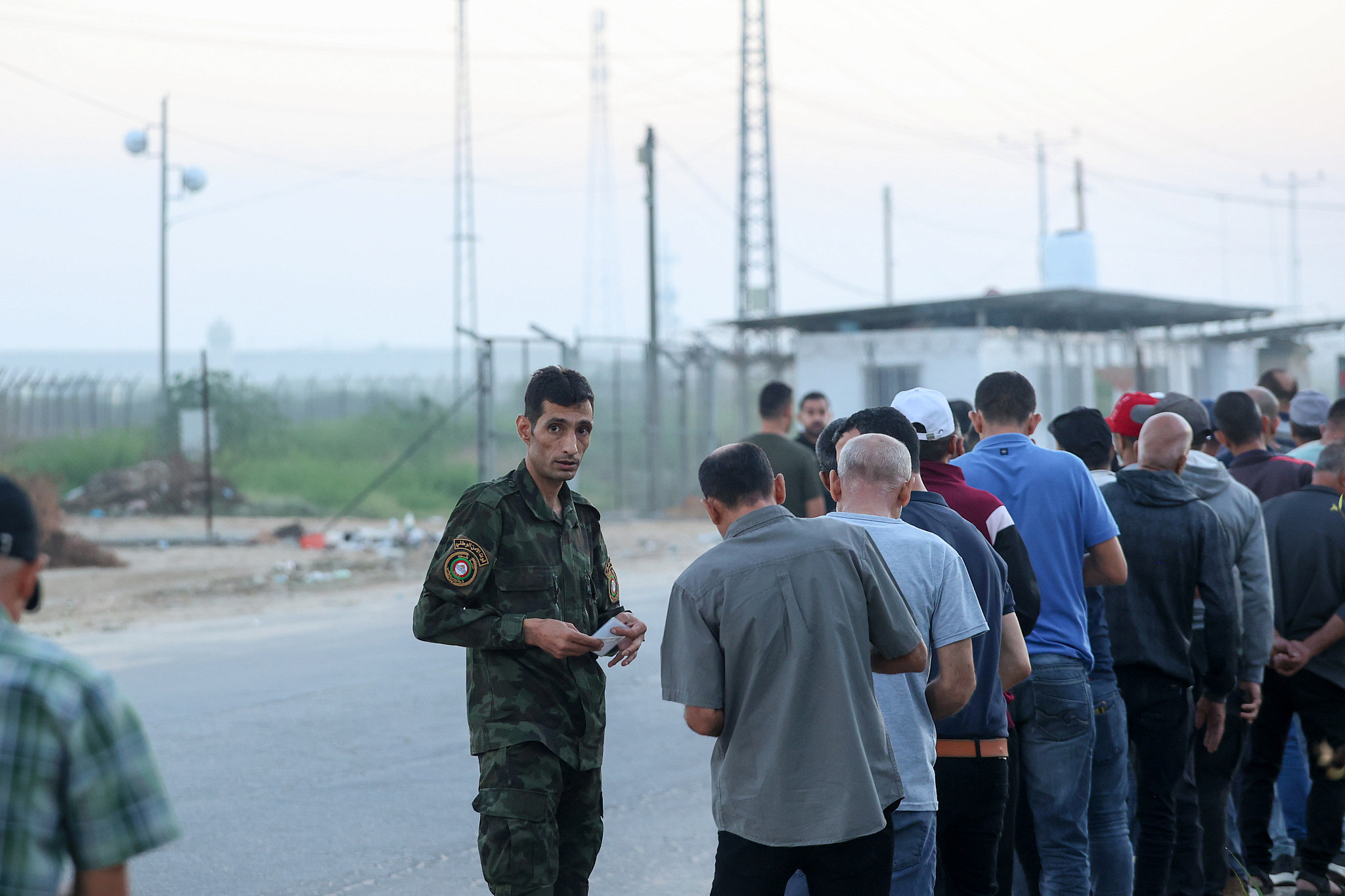
One of those workers, Bassem Katarana, 37, fears that his son was killed in an Israeli airstrike on Gaza’s Jabaliya refugee camp. But he can’t be certain because the news only came in bits and pieces — the cellular network in Gaza was too weak for his family to clearly communicate to him what had happened, and electricity in the strip has effectively been cut off entirely.
“I’ve been trying to get one call through. It’s a catastrophe and I want to be with my family now, dead or alive,” Katarana said.
Another worker, Jamil Askar, 33, said that despite working in Israeli cities for a few months, he was far more worried about the presence of settlers in the occupied territory. “This is my first time ever in the West Bank. I can’t believe that you guys have to deal with settlers among you, here in the same territory, while they are armed and joined by the occupation forces all the time,” he said, looking around, as if he was keeping an eye out for settlers.
Ramallah governor Laila Ghannam said that the PA would provide the Gazan workers with everything they needed, but that many basic necessities were in short supply, including mattresses, blankets, and clothing. Few people, however, have seen any real support or guidance from the PA to address their situation.
Such supplies have instead been provided by volunteers and grassroots activists like Sahar Khatib, from Al-Bireh, who are taking it upon themselves to help the stranded laborers. As we spoke, she was scrolling through a list of essentials she had typed out on her phone to distribute to Gazan workers.
“These are difficult times, but we have to count on our communal solidarity, because our leadership in the West Bank is irrelevant,” Khatib said.
A crisis of legitimacy
As Tuesday night’s protests revealed, the PA is coming under a heavy barrage of criticism among its people for doing so little. Last week, the stillness that had taken hold of the West Bank was briefly interrupted by an angry uproar on social media after Abbas criticized Hamas.
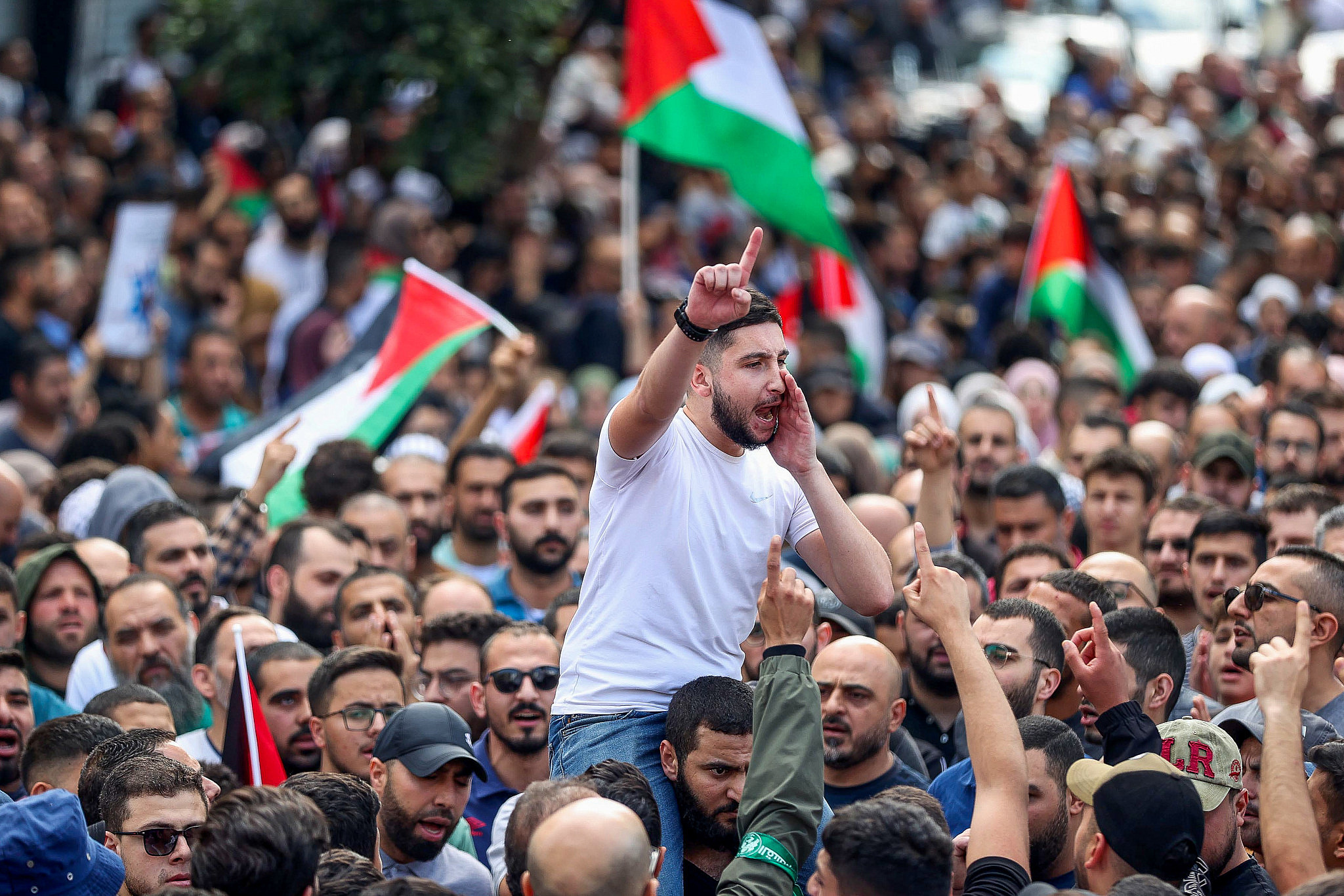
Abbas’ statement — which was reported Sunday night by the official Palestinian news agency during his call with Venezuelan President Nicolás Maduro — called for the release of civilians from both sides, including Palestinian prisoners in Israeli jails, condemned the killing of civilians by both parties, and said that the actions of the Islamist group did not reflect the views of the Palestinian people. The news story was updated shortly afterward with a line saying: “The President also stressed that the policies, programs and decisions of the Palestine Liberation Organization represent the Palestinian people as the sole legitimate representative of the Palestinian people, and not the policies of any other faction.”
For many Palestinians, these statements touched a nerve. The PA — which Abbas, who was elected as its head in 2005, remains in charge of more than a decade after the supposed end of his term — is in a crisis of legitimacy, exacerbated by repeatedly delayed elections, politically motivated arrests, and the total absence of democratic or reunification processes in Palestine. Few see the PA as actually protecting people on the ground, beyond filing complaints at international tribunals and fora, and providing minimal basic services. As such, to his people, Abbas’ remark that Hamas “doesn’t represent the Palestinian people” begs the question: who does, then?
According to Hani Al-Masri, the director of the Masarat, a Palestinian think tank, the current war highlights the crucial need for change in the Palestinian arena. The glaring “absence of official Palestinian institutions,” especially the PLO, is evident in its frail political discourse and the failure to form a unified leadership to face Israel.
“The Palestinian leadership now faces an opportunity — which may be its last — to align with its people and prioritize unity,” said Masri. “Because after this war, regardless of its results, it will be requested [by Israel] to be a puppet; otherwise, it will be dismissed and replaced by another [entity].”
Masri also warned that Abbas’ Fatah party, which has historically led the PLO, “must take the initiative to capture this historical moment. Otherwise, its fate will be like the fate of Israel’s Labor Party, which similarly founded and led [the Zionist movement] for a long period, and now can hardly pass the electoral threshold.”

